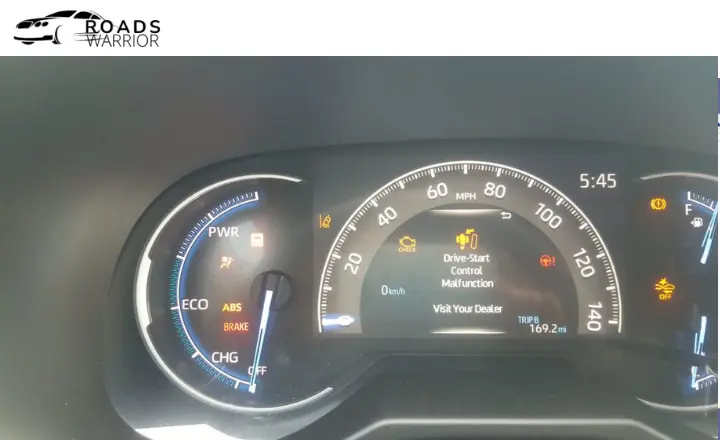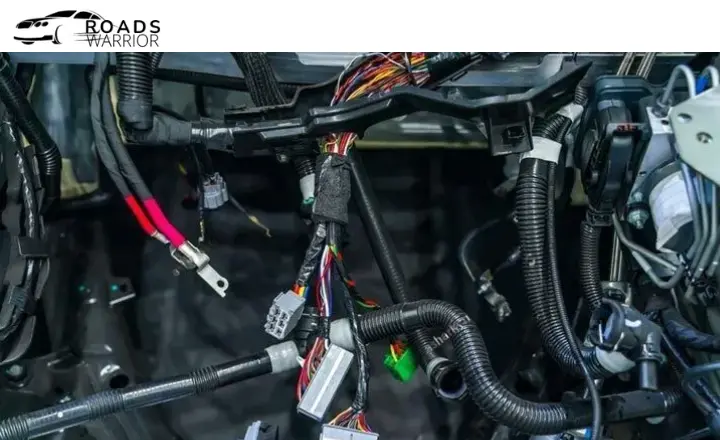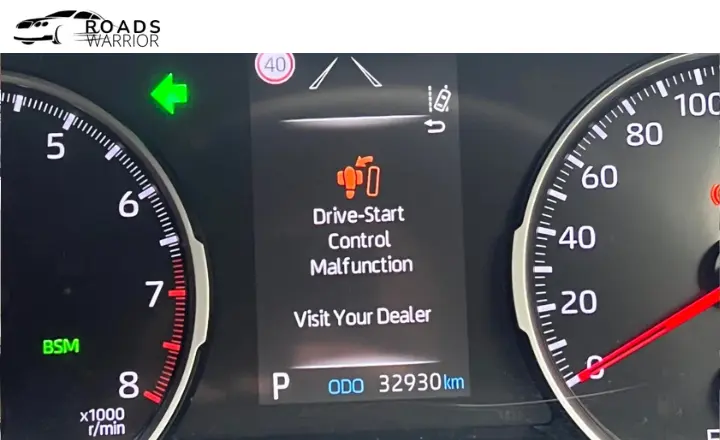Seeing an unfamiliar warning message suddenly appear on your car’s dashboard makes any driver’s heart skip a beat. One such mysterious notification that can pop up on Toyota models is the “Drive Start Control Malfunction” alert. This ominous-sounding notice is bound to cause concern and confusion for Toyota owners.
In this post, I’ll explain what this warning means, discuss its potential causes, and, most importantly, provide practical advice for diagnosing and addressing the issue. I aim to demystify this technical error code so you can understand why it showed up and how to get your Toyota back to regular operation.
With some insight into what may be malfunctioning under the hood and helpful troubleshooting tips, you can identify and resolve the problem – ideally, before it leaves you stranded. Read on for straightforward information about dealing with your Toyota’s “Drive Start Control Malfunction” warning.
What does drive start control malfunction mean?

Modern Toyota vehicles feature the Drive Start Control Malfunction warning on the dashboard to alert drivers when there’s a system problem. This warning is designed to indicate issues related to monitoring acceleration.
The system controls power output and engine input during abrupt accelerator or brake changes. Its primary function is to detect whether drivers have mistakenly pressed the gas instead of the brake or vice versa. If this warning light comes on, it’s essential to have the vehicle checked by a qualified technician as soon as possible to ensure the safe and reliable operation of the drive start control system.
If you accidentally step on the gas instead of the brake, this system will:
- When experiencing unintended acceleration, it’s crucial to apply the brakes immediately. This action will help bring the car to a stop and prevent any further acceleration.
- Engine power should be monitored and controlled to ensure the car maintains average speeds. This can be particularly important in preventing unintended acceleration or maintaining control in challenging driving conditions.
If you receive a “drive start control malfunction” message, it indicates a fault within this system of your Toyota.
The malfunction may lead to a noticeable decrease in power or an inability to start the vehicle entirely.
You might experience difficulties reaching higher speeds or notice increased instability while driving.
It’s important to understand that other symptoms and warning signs may also become evident if the DSC malfunction is linked to another issue within the vehicle’s systems.
POSSIBLE CAUSES
It is difficult to pinpoint the exact cause of the Drive Start Control malfunction message without adequately diagnosing it. For this reason, we recommend having a Toyota technician inspect the vehicle.
Wiring Issues
One of the most common reasons for this error message is a wiring problem. Electrical signals cannot adequately transmit throughout the vehicle if a cable is damaged or disconnected. This often leads to issues like stalling and difficulty starting.
Battery Problems

A bad or dying battery that cannot provide enough power can also trigger a malfunction message. This likely causes the low-voltage warning light to illuminate as well. Recharging or replacing the battery may resolve the issue.
Blown Fuse
Since vehicle systems are powered through fuse boxes, a blown fuse can interrupt electrical power and cause malfunctions. Checking and replacing any blown fuses may be necessary.
Faulty Sensors
The traction control and ABS wheel speed sensors can sometimes send false signals that the systems interpret as malfunctioning. Faulty input from these sensors could be the culprit.
Ignition Coil Failure
If the ignition coil fails, it cannot correctly ignite the air-fuel mixture. This can lead to a lack of power, misfiring, rough idling, and other drivability issues. These symptoms may cause the error message to appear.
ECU Malfunction

The engine control unit (ECU) relies on input and output signals to regulate vehicle systems. Communication errors can occur if there is an ECU ground connection failure or software issue. Resetting the ECU may resolve this.
IS IT SAFE TO DRIVE?
When a warning message pops up on your Toyota, it’s crucial to heed the alert and take immediate action. Driving while ignoring the warning could exacerbate the issue, leading to costly repairs and potentially further damage to your vehicle. Such a significant problem could render your car inoperable until adequately addressed. The risk of being stranded away from home is possible if you disregard these warning signs.
By stopping driving immediately and addressing the issue head-on, you can save yourself from extensive repair costs and the inconvenience of being stranded unexpectedly. Remember that minor issues can escalate if left unattended, so taking prompt action when a warning message appears is vital for ensuring your vehicle’s safety and longevity.
HOW TO RESOLVE
Cleaning the Sensor
- The ABS sensor can get contaminated over time. Carefully clean the sensor using a soft cloth and electrical contact cleaner. Removing built-up debris may resolve ABS warning lights or issues.
Inspecting the Wiring
- Check all wiring connected to the ABS sensor. Repair any disconnected, damaged, or corroded wires. Ensure all connectors are properly secured. Fixing wiring issues can clear ABS problems.
Replacing the Fuse
- The ABS relies on power from a dedicated fuse. If blown, replace it with an identical fuse with the proper amperage rating. A working fuse powers the ABS module and components.
Professional Help
- If DIY troubleshooting does not solve your ABS issues, have your Toyota serviced by a certified technician. They have the knowledge and resources to diagnose and resolve tricky ABS problems accurately. Leaving issues unattended can lead to more significant problems down the road.
COST TO REPAIR
The drive start control malfunction repair cost varies based on the specific issue. Replacing a blown fuse can be done independently for as little as $5. On the other end of the scale, professional replacement and configuration of an ECU may exceed $1,000. The expense is contingent upon the nature of the problem. Various online estimates offer insight into potential repair costs, but it’s essential to consider your specific circumstances before making any decisions.
- One user on the Tacoma World Forum, known as Tacoma in Ottawa, reported spending $264.92 on parts and $161.94 on labor to repair a neutral safety switch short circuit.
- According to Repair Pal, replacing a Corolla Powertrain Control Module can cost between $870 and $952, including labor charges of $67-85 and parts costing $803-866.
- The sensor replacement might range from $377 to $445, with estimated labor costs of $75-$95 and parts costing $302-$349.
If unable to perform the work independently, one must be prepared to pay an hourly rate for a mechanic’s services.
Visiting a Toyota technician might come at an even higher expense, but he offers specialized expertise in working on your vehicle.
Conclusion
Experiencing a drive start control malfunction on your Toyota can be frustrating and concerning. It is essential to address this problem promptly to prevent any potential safety hazards or damage to the vehicle. Consult a certified technician or visit an authorized Toyota service center to diagnose and repair the malfunction.
By taking proactive steps to resolve this issue, you can ensure your vehicle’s continued reliability and performance. Don’t hesitate to schedule a maintenance appointment and get your Toyota back in top condition today!
